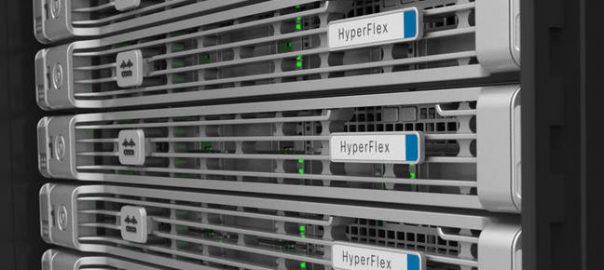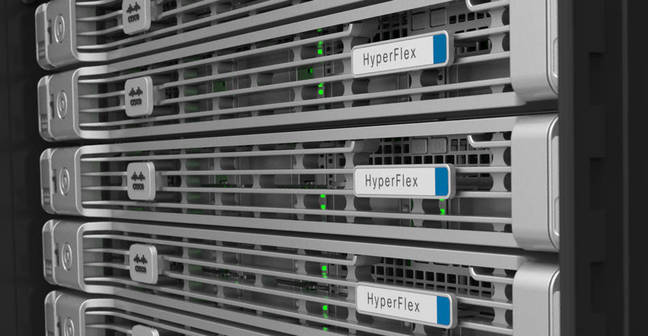
Cisco eased our job by releasing a pre installation spreadsheet and it is very important to read that document with great attention. It will allow you to prepare the baseline of your HC infrastructure. The installation is very straightforward once all the requirements are met. The HX infrastructure has an important peculiarity, it is very very very (did I say very) sensitive …. if one single requirement is not met, the installation will stall and you will be in a delicate situation because you could have to wipe the servers and restart the process. As a result, you could lose precious hours.
Cisco has a way to automate the deployment and to manage your HX cluster.Finally, The HX installer will interact with the Cisco UCSM, the vCenter, and the Cisco HX Servers.
It is especially relevant to note that the Cisco HX servers are tightly integrated with all the components described in the picture below:
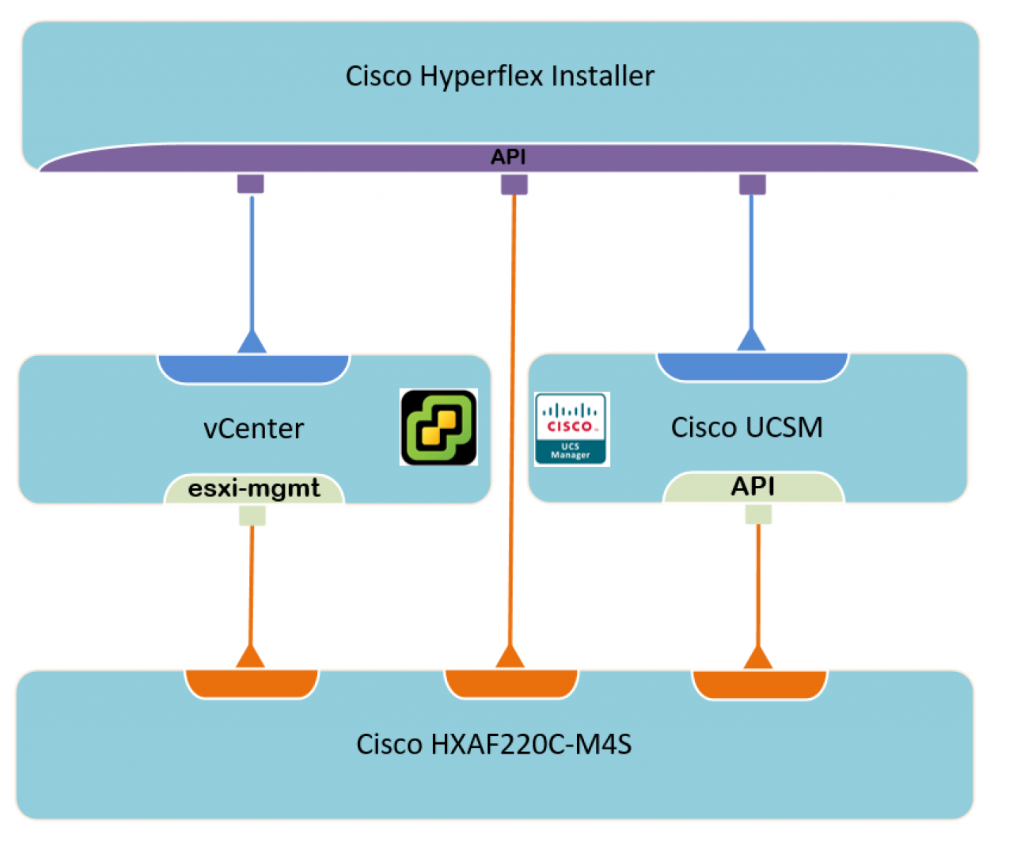
HyperFlex Software versions.
As usual with this kind of deployment, you have to make sure that every version running in your environment is supported. We will run the 2.1(1b) version in our lab and will upgrade to 2.5 at a later time. We need to make sure that our FI UCS Manager is running 3.1(2g).

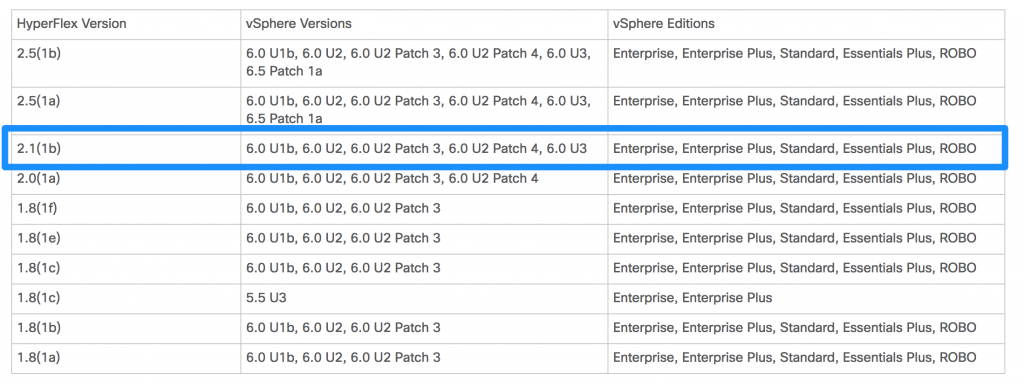
Nodes requirements.
You cannot install less than 3 nodes in a Cisco HyperFlex Cluster. Because the HX solution is very sensitive, it is mandatory to have some consistency across the nodes regarding the following parameters:
- VLAN IDs
- Credentials
- SSH must be enabled
- DNS and NTP
- VMware vSphere installed.
Network requirements.
First of all, the HyperFlex solutions require several subnets to manage and operate the cluster.
We will segment these different types of traffic using 4 vlans:
- Management Traffic subnet: This dedicated subnet will be used in order for the vCenter to contact the ESXi server. It will also be used to manage the storage cluster.
- VLAN 210: 10.22.210.0/24
- Data Traffic subnet: This subnet is used to transport the storage data and HX Data Platform replication
- VLAN 212: 10.22.212.0/24
- vMotion Network: Explicit
- VLAN 213: 10.22.213.0/24
- VM Network: Explicit
- VLAN 211: 10.22.211.0/24
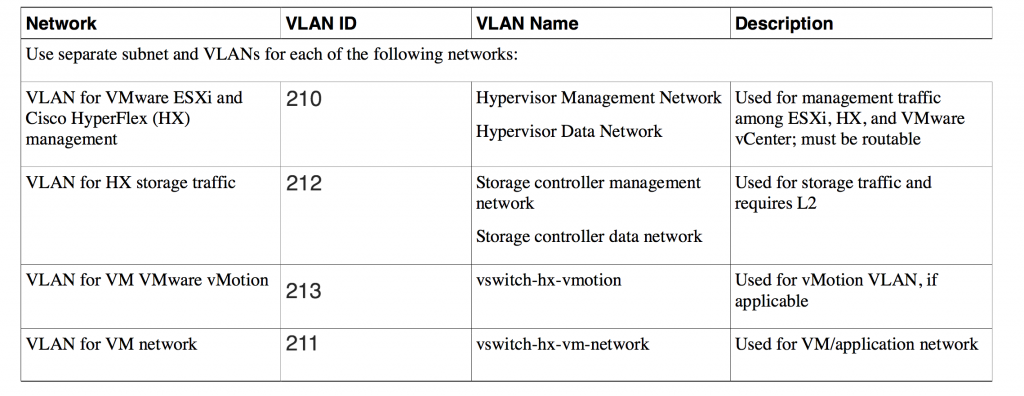
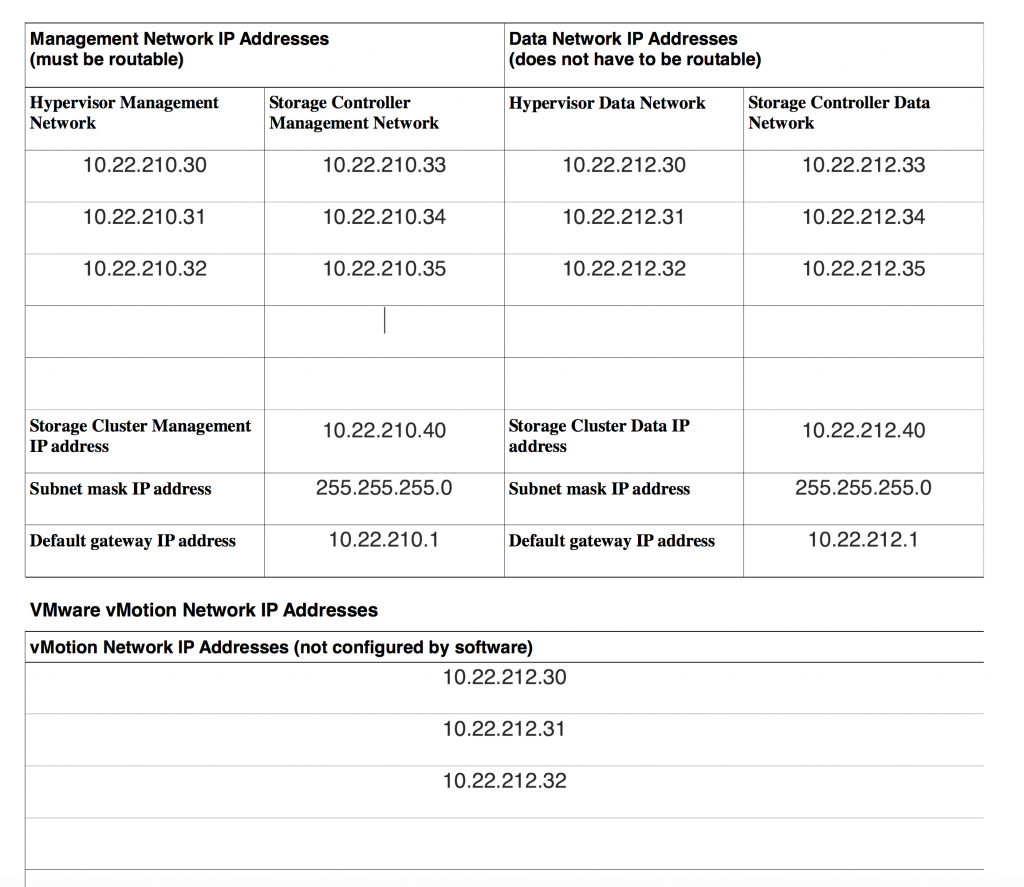
UCSM Requirements.
We also need to assign IP addresses for the UCS Manager Fabric Interconnect that will be connected to our Nexus 5548:
- Cluster IP Address:
- 10.22.210.9
- FI-A IP Address:
- 10.22.210.10
- FI-B IP Address:
- 10.22.210.11
- A pool of IP for KVM:
- 10.22.210.15-20
- MAC Pool Prefix:
- 00:25:B5:A0
DNS Requirements.
It is a best practice to use DNS entries in your network to manage your ESXi servers. Here we will use 1 DNS A records per nodes to manage the ESXi server. The vCenter, Fabric Interconnect and HX Installer will also have one.
The list below will show all the DNS entries I have used for this lab:
- srv-hx-fi
- 10.22.210.9
- srv-hx-fi-a
- 10.22.210.10
- srv-hx-fi-b
- 10.22.210.11
- srv-hx-esxi-01
- 10.22.210.30
- srv-hx-esxi-02
- 10.22.210.31
- srv-hx-esxi-03
- 10.22.210.32
- srv-hx-installer
- 10.22.210.211
- srv-hx-vc
- 10.22.210.210
This sounds very basics and as a consequence, it is CRITICAL that these steps are performed PRIOR any deployment otherwise you will waste a lot of time trying to recover (at some point you would have to wipe your servers and reinstall a custom ESXi image on each one).
Finally, In the next blog post, I will show how to install the vCenter, The Fabric Interconnect and the HX installer needed for the HyperFlex deployment.
In conclusion, do not hesitate to leave a comment to let me know if you encountered any issue while planning your deployment.
Thanks for reading!

